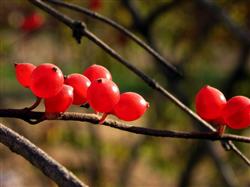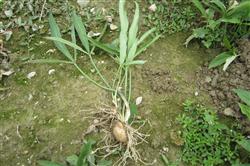Planting technique of Pinellia ternata: what about tuber rot of Pinellia ternata?

How does Pinellia tuber rot disease do? What method can effectively control tuber rot of Pinellia ternata? Hope that friends can help guide the occurrence of tuber rot in Pinellia ternata. The following land network summarizes the harm and control methods of tuber rot in Pinellia ternata for netizens' reference. Harm of tuber rot of Pinellia ternata: there are more Rain Water in autumn, and tuber rot is easy to occur in Pinellia ternata at this time. Once this disease occurs, it will rot in a short time, 80% of the light will rot in a week, and the heavy plots will take 3 to 5 days. All the tubers of Pinellia ternata are rotten, and the soil and air of the whole land give off a fishy smell. At the initial stage of pathogen infecting Pinellia ternata tuber, irregular black spots appeared around the tuber, which expanded rapidly. After 3-4 days, a large number of bacterial spots connected together and continued to infect the tuber. At this time, the root system of Pinellia ternata began to atrophy, and the aboveground leaves gradually changed from green to yellow and withered. A week later, the tuber of Pinellia ternata showed a round blister, like a ripe grape, the tuber was full of black water, and the whole plant died, leaving only a thin skin. The spread of bacteria will quickly infect other Pinellia ternata tubers, causing the whole Pinellia ternata to rot in a short period of time, and the soil and air of cultivated Pinellia ternata give off a fishy smell. Control methods of tuber rot disease of Pinellia ternata: 1. Select varieties to plant Pinellia ternata, select varieties of Pinellia ternata with strong disease resistance and vigorous growth, such as "narrow clover", "willow leaf" and other leaf-shaped varieties, and select disease-free tubers or bulbs as seed stems. 2. Before sowing, the selected seed stem must be treated and disinfected, such as seed drying and chemical dressing, so as to prevent the seed stem from carrying bacteria. 3. Land selection must choose loam or sandy loam, PH value between 6.5 and 7 to plant Pinellia ternata, and this land has not occurred root rot or rot disease before. In rainy areas in autumn, the selected plots should have a slope of 20%. For plain areas and flatter plots, every other interplanting bed should be left with a drainage ditch of 30 cm wide and 30 cm deep when planning for the early stage of cultivation of Pinellia ternata. To ensure that in case of continuous rainy weather, the water in the soil of the Pinellia ternata can thoroughly infiltrate into the drainage ditch and discharge the plot in time. 4. remedial measures should be carried out in various forms and times of ploughing and loosening the soil when the soil is wet and rainy, so as to break the soil lamination, remove harmful gases from the soil, and enter fresh oxygen in the air. increase the exchange of gas in the soil and air, this measure can effectively prevent and reduce the occurrence of rot. 5. In the middle and later stages of the growth of Pinellia ternata, if you encounter continuous rainy weather and high soil moisture, you should frequently check the growth of Pinellia ternata, and if you find that some of the Pinellia ternata plants are rotten, in this case, no matter whether it comes to the ploughing season or not, it should be harvested in time, without delay, otherwise, the tubers rot very quickly, the ones that rot first are big, and then those that rot are small, resulting in reduced production or even no yield. At the same time of emergency harvest, the tubers of Pinellia ternata harvested from the wet mud should be peeled and processed immediately, so the interior of the fresh tubers is still rotting, if not processed, most of the tubers will rot after 1 or 2 days. Click to get more planting techniques of Pinellia ternata
- Prev

Honeysuckle planting techniques: how to reproduce honeysuckle?
How do honeysuckle reproduce? What are the breeding methods of honeysuckle? Also ask friends to help introduce the propagation methods of honeysuckle mainly include seed propagation, cutting propagation and striping propagation, the following three propagation methods are introduced in detail for your reference. Propagation method one, seed propagation: 8: 1.
- Next

Planting techniques of Pinellia ternata: how to manage dry Pinellia ternata in winter?
How to manage Pinellia ternata in winter? There are no experienced netizens please give guidance to enter the winter, dry Pinellia ternata winter management if poor management, will directly affect its output and quality. Therefore, it is very important to strengthen its winter management. The following farming network lists the management methods of dry Pinellia ternata and winter for everyone.
Related
- Fuxing push coffee new agricultural production and marketing class: lack of small-scale processing plants
- Jujube rice field leisure farm deep ploughing Yilan for five years to create a space for organic food and play
- Nongyu Farm-A trial of organic papaya for brave women with advanced technology
- Four points for attention in the prevention and control of diseases and insect pests of edible fungi
- How to add nutrient solution to Edible Fungi
- Is there any good way to control edible fungus mites?
- Open Inoculation Technology of Edible Fungi
- Is there any clever way to use fertilizer for edible fungus in winter?
- What agents are used to kill the pathogens of edible fungi in the mushroom shed?
- Rapid drying of Edible Fungi

